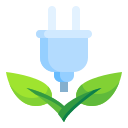
Smart Home Energy Management Technologies
Smart home energy management technologies are transforming the way homeowners monitor, control, and optimize their energy consumption. By integrating connected devices, intelligent analytics, and automation, these systems allow for greater efficiency, sustainability, and savings. With growing awareness of environmental concerns and the increasing cost of energy, adopting smart home energy management solutions empowers individuals and families to take proactive steps toward a more sustainable future. This page explores the essential components and benefits of these cutting-edge technologies, delving into their applications, advantages, and the innovations driving this evolving field.
Real-Time Consumption Tracking
Real-time consumption tracking enables homeowners to see exactly how much energy they use at any given moment, down to individual appliances and devices. By delivering live data directly to a smartphone or central hub, this technology creates transparency and awareness about household consumption habits. With detailed, minute-by-minute information, users can immediately spot unusual use, identify energy hogs, and adjust behaviors accordingly. This not only helps lower utility bills but also encourages more responsible and environmentally friendly energy practices.
Data Analytics and Usage Insights
Smart home energy management technologies employ advanced data analytics to process the influx of information gathered by sensors throughout the home. These analytics transform raw usage data into actionable insights, such as identifying peak usage times, indicating devices that contribute most to the bill, and uncovering inefficiencies in daily routines. With easy-to-read visualizations, homeowners can quickly understand where to focus their energy-saving efforts and set achievable goals for reducing consumption.
Automated Smart Devices Integration
Smart thermostats revolutionize household heating and cooling by learning residents’ schedules and preferences. These devices automatically adjust temperature settings to align with occupancy, ensuring energy isn’t wasted when rooms are unused. By incorporating sensors and remote control capabilities, smart thermostats provide both comfort and savings. Over time, adaptive algorithms fine-tune temperature adjustments and contribute significantly to lower utility bills without sacrificing comfort.

Renewable Energy Integration
Solar Panel Energy Management
Smart home technology enables optimal use of solar energy production by tracking generation in real-time and matching it with household consumption needs. Homeowners can prioritize self-consumption, ensuring that their appliances use solar power as it’s generated. Excess energy can be stored or exported to the grid, depending on current demands and tariffs. Enhanced management tools help maximize the benefits of a solar installation, increasing return on investment while reducing carbon footprints.
Battery Storage and Usage Optimization
Battery storage systems play a crucial role in balancing renewable energy production and household consumption. Integrated with smart home technologies, these batteries can be charged during periods of excess solar output and discharged during peak usage or power outages. Sophisticated control algorithms ensure that the storage capacity is utilized efficiently, helping to avoid expensive peak-period electricity costs and maintaining reliable power supply during grid disturbances.
Grid Interaction and Demand Response
Smart home energy management systems allow for sophisticated two-way communication with the grid, supporting demand response strategies. When prices rise or supply is limited, connected devices can automatically reduce or shift their consumption to off-peak times, easing demand on the grid. In some cases, homeowners can even sell surplus energy back to the utility, generating income and contributing to grid stability. This dynamic relationship benefits both the individual and the broader community by promoting a more resilient and sustainable energy system.
